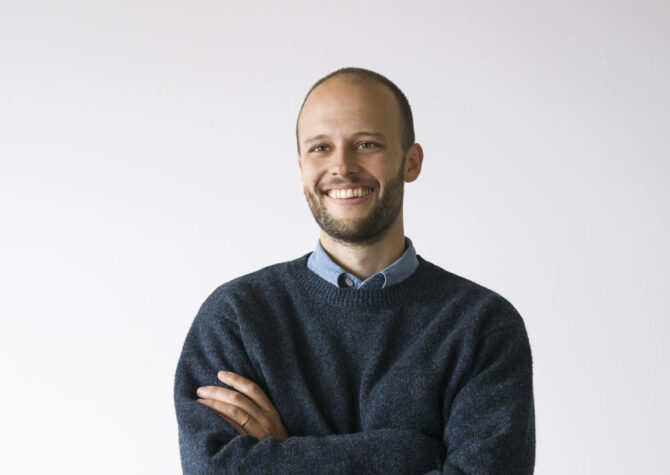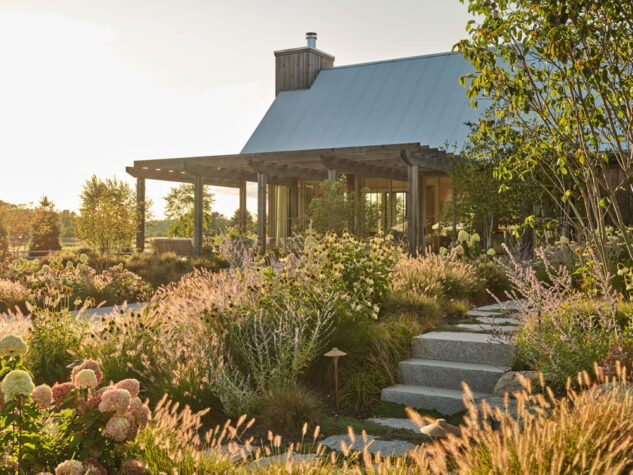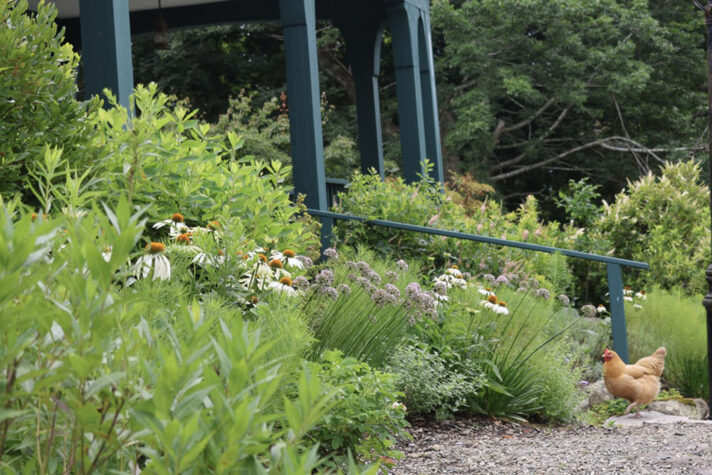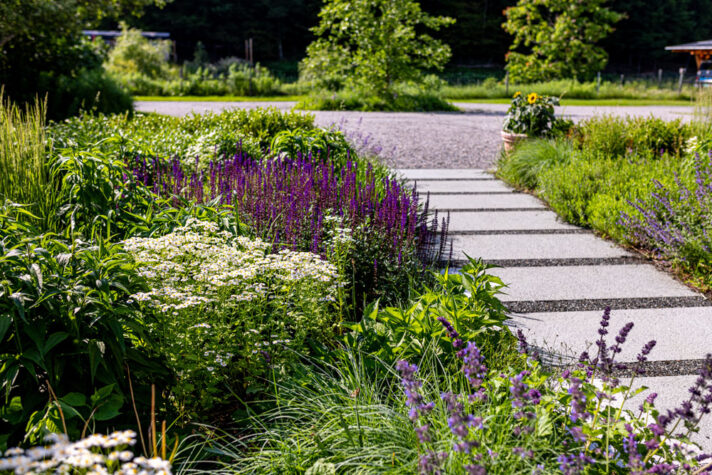Landscape Designer Gavin Boyce-Ratliff on Planting For Your Future
The benefits of density and why preaching “native only” isn’t the only answer
“Money and labor aside, density provides habitat for wildlife, maintains soil temperatures, and helps fight erosion and runoff. A win, win, win.”
MH+D ASKS BOYCE-RATLIFF TO TELL US MORE.
Q. How do you start your design process?
A. Everything starts in the landscape. Whether it’s a small consultation or a multiyear master planning effort, my design experience and tendencies are only valuable if I properly understand the land we’re talking about. After hearing from the clients, and talking through what the process might look like, I go and find a place in the garden to just sit quietly for a while. I’ll probably come back to it over and over through the project, using it as a place to pause and reset. I find if I spend too much time getting caught up in the drawings and base plans, I quickly lose track of the site’s character. So, as much as the early stages of the design involve pen on paper and concept sketches, the more time I can spend without plans and an open mind on-site, the better.
More tangibly, one of the first things I do as a project kicks off is collect soil samples from the site. Between holistic soil analysis and a survey of existing plant material, the framework for our design work comes into greater focus.
Q. You’re very vocal about the danger of getting into chambers and preaching “native only” no matter the circumstance. Can you tell us a little more about that?
A. Let me preface by saying, when in doubt, plant native. It’s well documented how important it is to support and encourage a greater diversity of native species around our homes. This is at the heart of Doug Tallamy’s homegrown national park idea: that our human footprint on the landscape is so large that we need to use our gardens and landscapes as a means for piecing together habitats and migratory paths for wildlife, with which I fully agree.
However, there are numerous external factors at play, and I believe we need to be particularly thoughtful about how we transition into this next chapter in our gardens.
For one, climate change is causing species to migrate north at a rapid rate. Plants that were hardy in the mid-Atlantic 10 or 20 years ago are now marginally hardy up here in Maine. That’s crazy. However, what that means is we will get both the good and bad species as everything migrates north. Invasive species, tree-killing insects, and less reliable weather patterns will significantly impact our native flora. And so it’s up to us to decide what we want our future landscapes to look like. If some of our birches and maples are going to become less and less resilient in the face of all this, do we just keep planting “native” for the sake of it? Or do we begin selecting species from farther south that will better handle the next chapter? How do we even want to define “native?” It’s unbelievably complicated, and I won’t pretend to be the right guy to answer all these questions.
Similarly, gardening with native plants is only a piece of the puzzle. A backyard full of 100 percent native species is wonderful, don’t get me wrong. But if it’s planted in the traditional, widely spaced grid with too much mulch, irrigation, and herbicides, how much better is it really?
I am not a purist, and I try to create gardens that are full of “right plant, right place” species. If the end product requires minimal input and “maintenance,” attracts and supports wildlife, and encourages people to get outside and spend time in their landscape, I consider that a success. But everyone has a slightly different approach to this topic, and there isn’t one right answer, despite what some may say.
Q. Do you think garden design should echo your clients’ tastes or be site driven?
A. It has to be a marriage of both. No garden, even in urban areas, is ever truly created in a vacuum. We have to take cues from the climate and local vernacular. Certain plants won’t thrive in your hardiness zone; some stones are inappropriate for colder, icier climates. There are certain considerations and experiences from past work that I can bring to the table and share with my client.
A garden at its root is a space for humans, created by humans. There is immeasurable beauty in our forests and meadows and wilder spaces, but if we don’t have a space closer to home that brings us joy and refuge, it’s difficult to fully appreciate and advocate for the natural world beyond our fences. Whether it comes from a place of nostalgia or practicality, I think it’s imperative that the narrative for a garden stems from a client’s goals and the plants that bring them joy.
Q. What are the benefits of investing in a greater density of plants?
A. Perhaps counterintuitively, more plants can mean less maintenance. In a thoughtfully laid out and established garden, we can leverage the natural tendencies of plants to make our job easier. If, instead of an annual coating of mulch, we let grasses and sedges and wild strawberries weave their way through a bed, we get more visual interest and less opportunity for weeds to pop up. Upfront costs can be tough to swallow sometimes; we all want a good-looking space without spending more than we think we must. But if you pull out a calculator, and you think about the future management needs for your garden, more plants at the beginning can pay for themselves in spades. Less frequent maintenance, less mulch, less irrigation. And a more beautiful space.
To be a broken record: a garden ought to bring you joy and engage your senses. Plants are much better at this than mulch.
MH+D is proud to partner with acclaimed architectural photographer Trent Bell on his architecture, design, and photography podcast. To hear Bell’s conversation with Boyce-Ratliff, please visit adppodcast.com.



